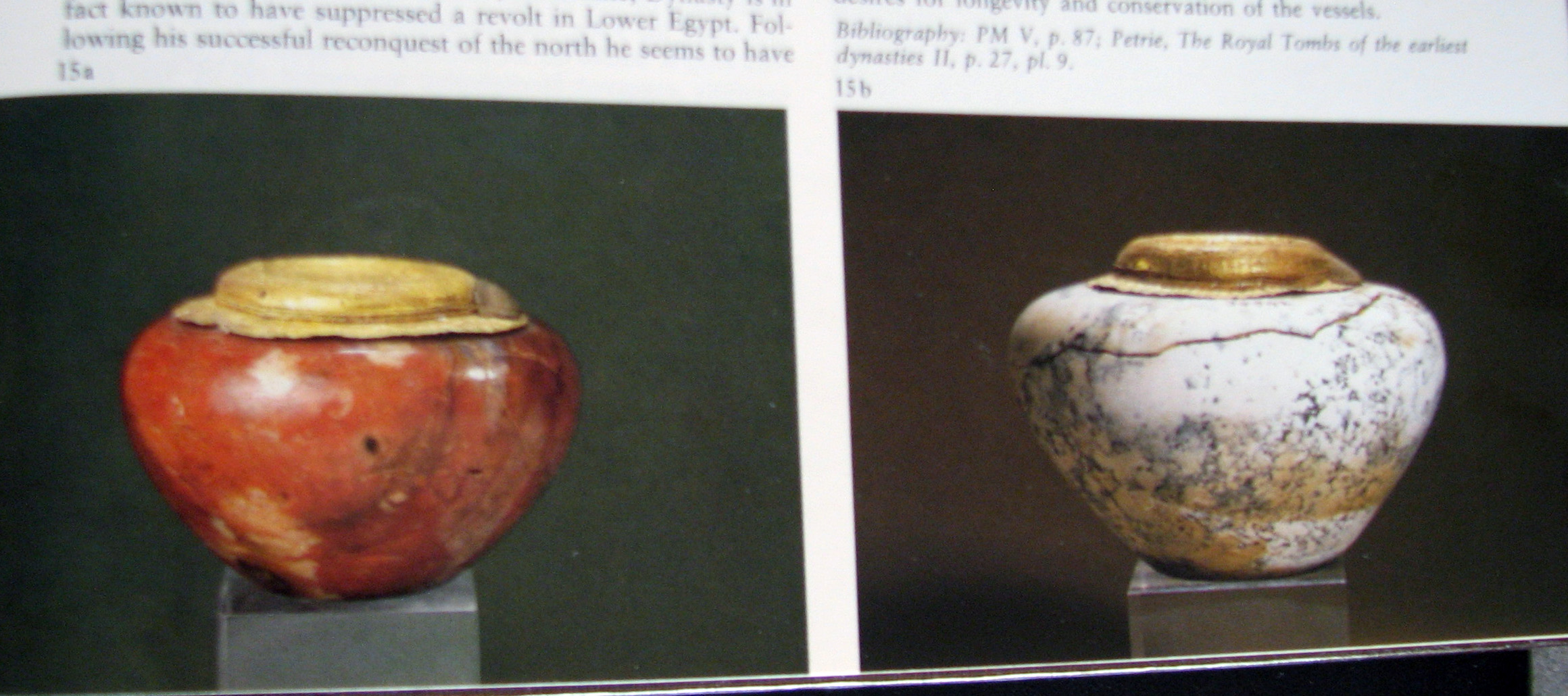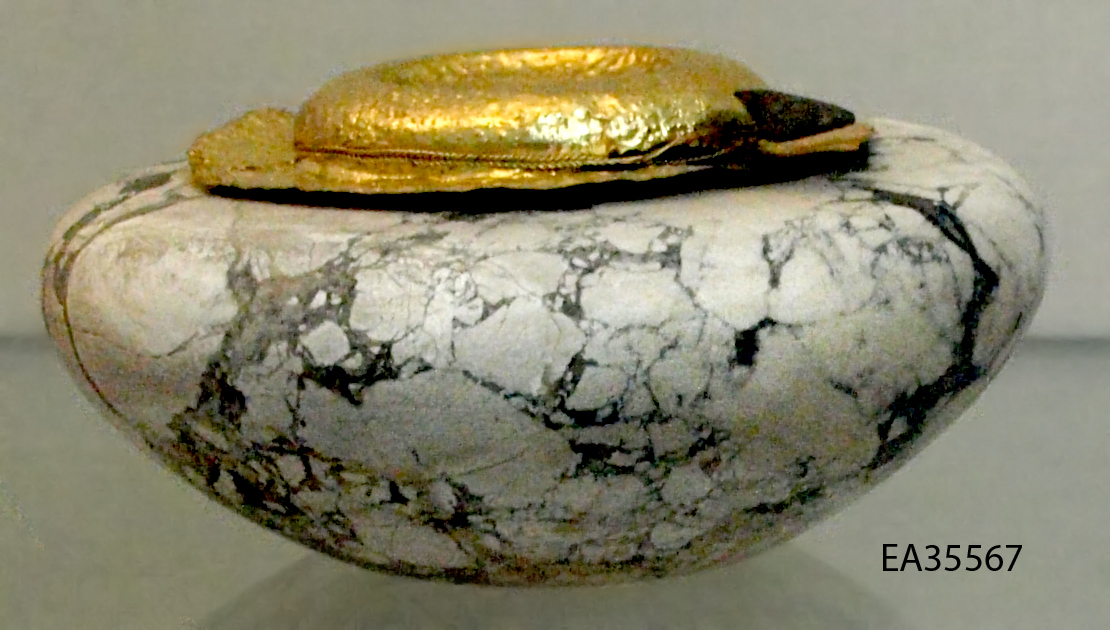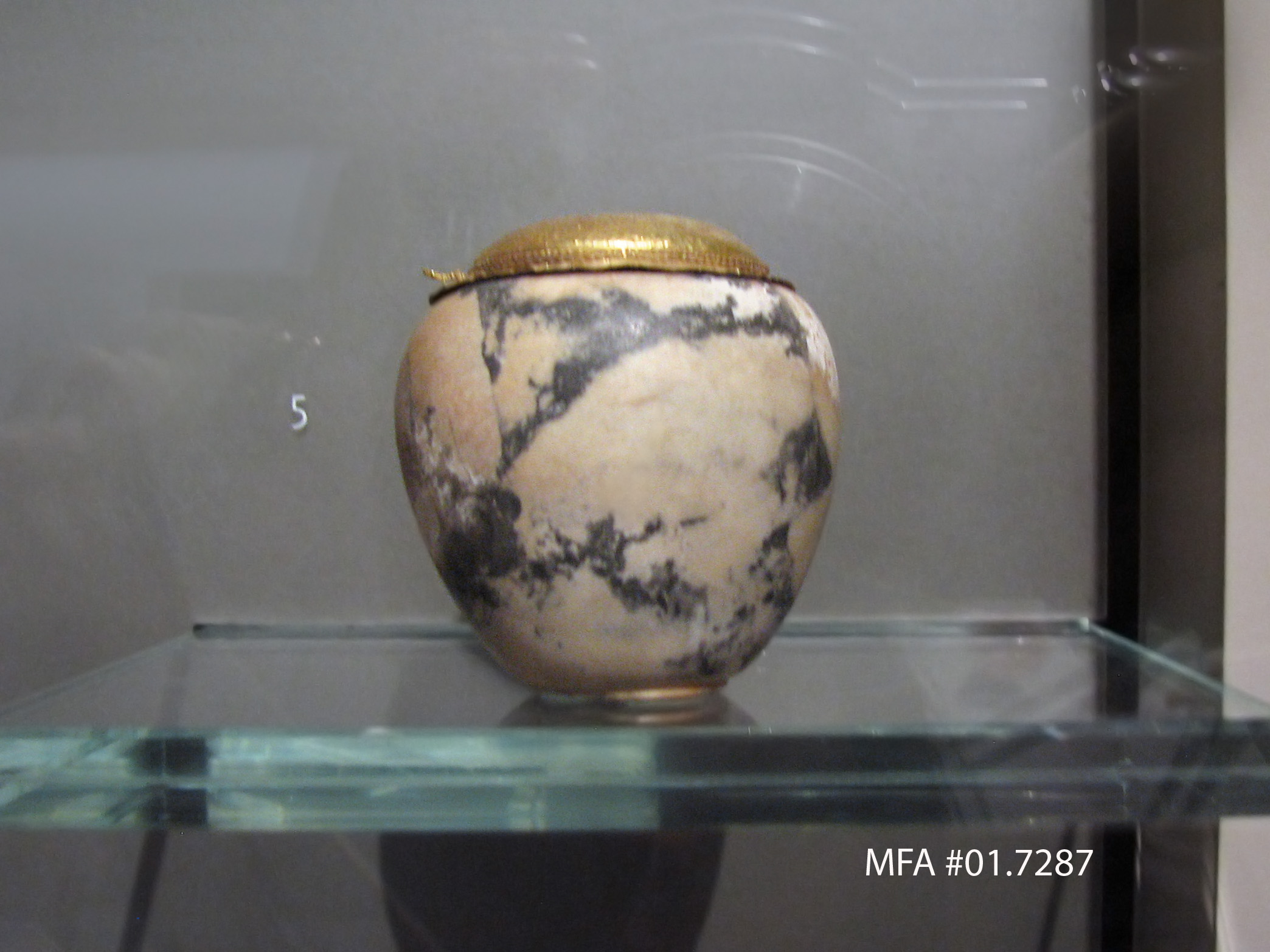
Egypt (Abydos, tomb of King Khasekhemwy), Dynasty 2, 2676-2649 B.C.E.
Dolomite and gold, Height x diameter: 63 x 61 cm (24 13/16 x 24 in.)
Egypt Exploration Fund by subscription 1901,MFA #01.7287
Photo © Joan Ann Lansberry
"This graceful little ointment jar, one of several from the tomb of Second Dynasty king Khasekhemwy, demonstrates both the wealth of the early royal tombs and the superb craft of the Early Dynastic royal workshops. To produce the set of gold-topped vessels, Khasekhemwy's artists selected distinctive and beautiful stone in a wide range of colors, such as this unusual black-veined variety of limestone. The circular gold-foil cover, held in place by a delicate gold wire, imitates a piece of cloth or leather tied with a string. Tiny repoussť dots effectively convey the texture of the material. The technique of manufacturing the tie is particularly impressive - thin bands of gold have been painstakingly twisted to resemble a cord and are wound twice around the neck of the jar." (From museum website)
"The funerary equipment from the tomb of Khasekhemwy at Abydos included more than two hundred stone vases, of which six of dolomite and one of carnelian possessed covers of gold. The latter consist of thick gold leaf fitted to the form of the vessel's rim and attached to its mouth by a golden chain stamped with a clay seal. [...]
"The extraordinary polish and harmony of form and color indicate a concern for beauty over and above the more mundane desires for longevity and conservation of the vessels." (From _Official Catalogue: The Egyptian Museum Cairo_, by Mohamed Saleh and Hourig Sourouzian, photographs by Jurgen Liepe, translations by Peter Der Manuelian and Helen Jacquet-Gordon, (Prestel-Verlag 1987)
The Cairo museum has two of those six exquisite bowls, this photograph by Jurgen Liepe:
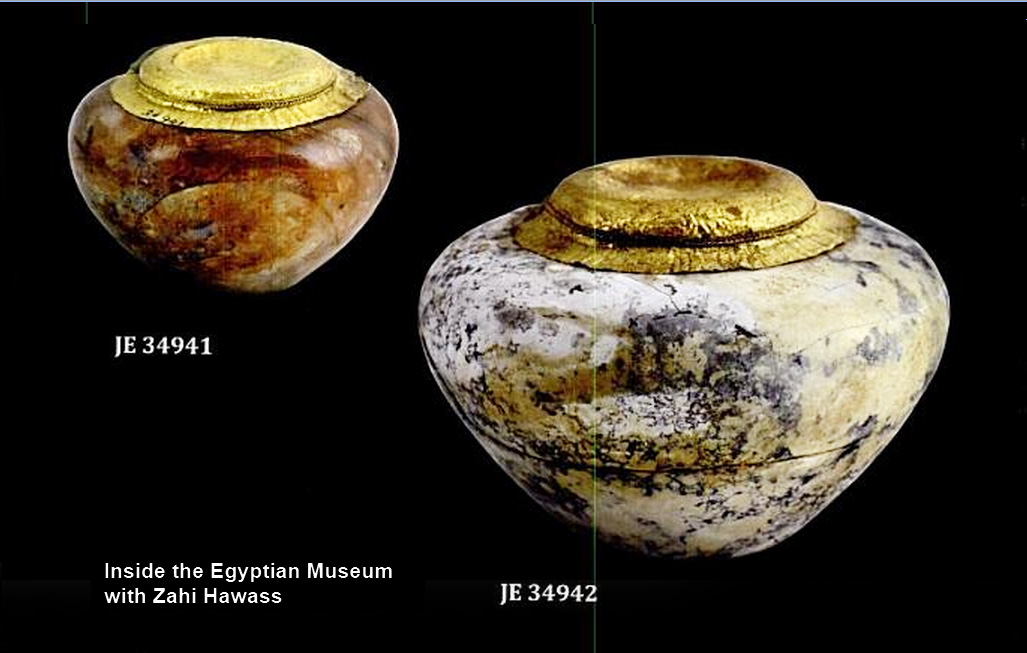
_Inside the Egyptian Museum with Zahi Hawass_, with photos by Sandro Vannini, captures these two bowls from a different angle.
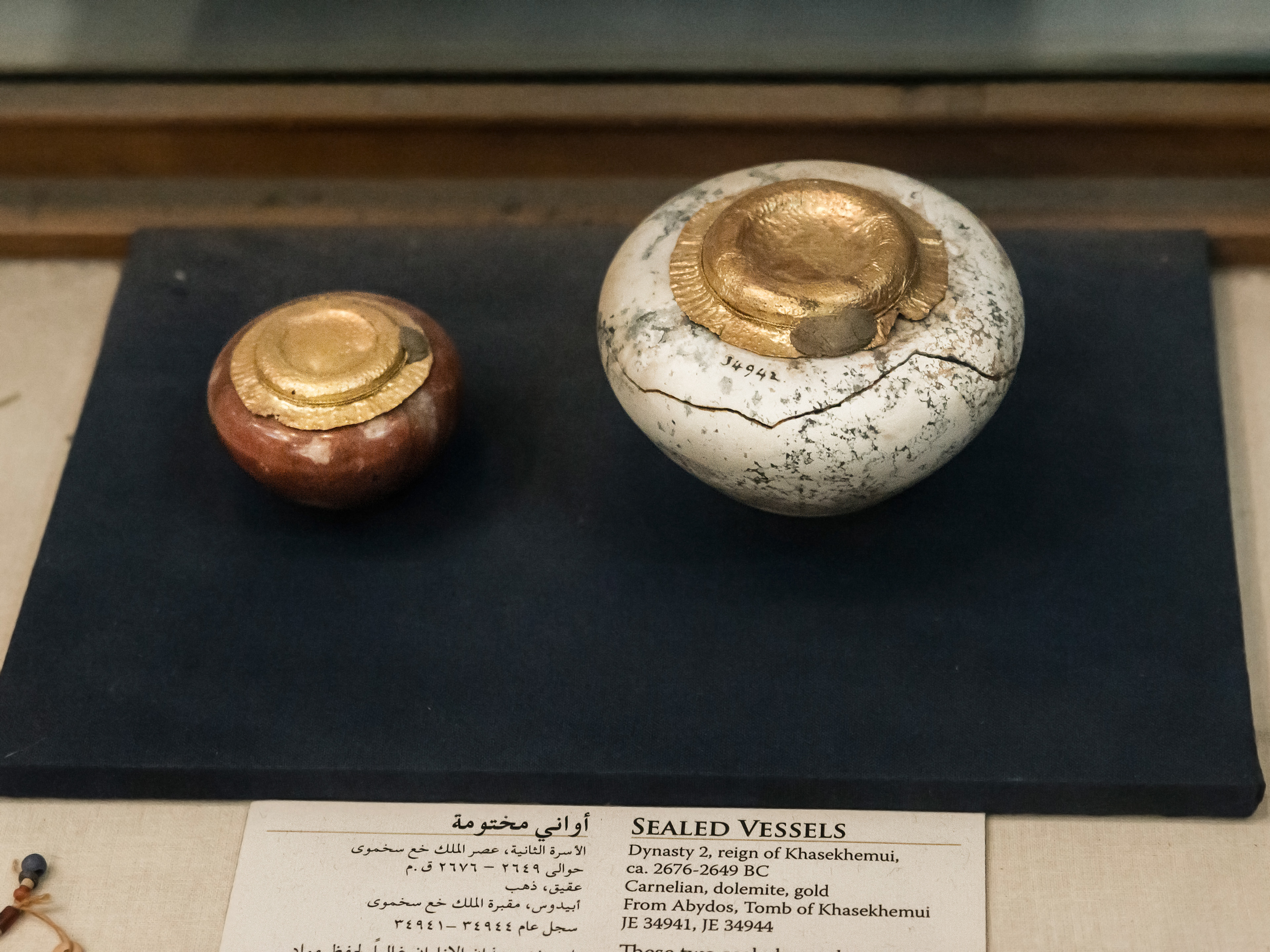
And Kairuinfo4u shares another view of these two pieces.
The British museum has another two of these vessels, and Wikipedia contributer Captmondo has shared a photo of one:
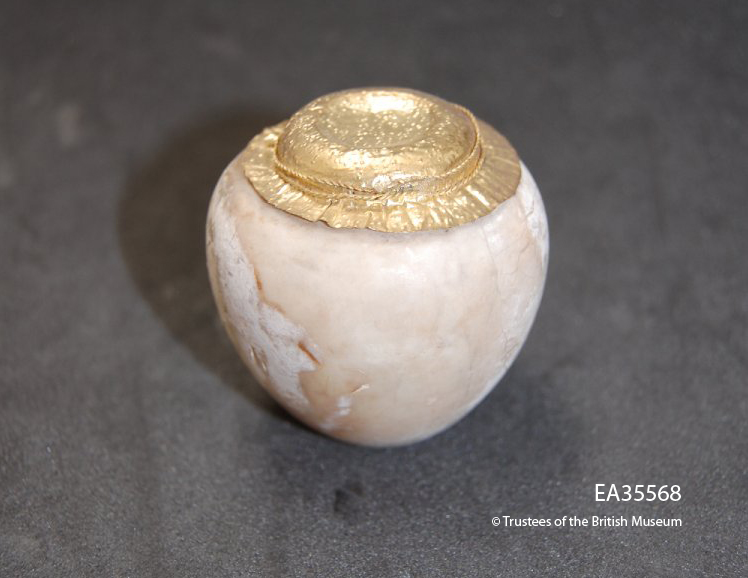
This is the British Museum's photo of the other piece.
Moving on to other pieces from Khasekhemwy's tomb, we have a scepter fragment:
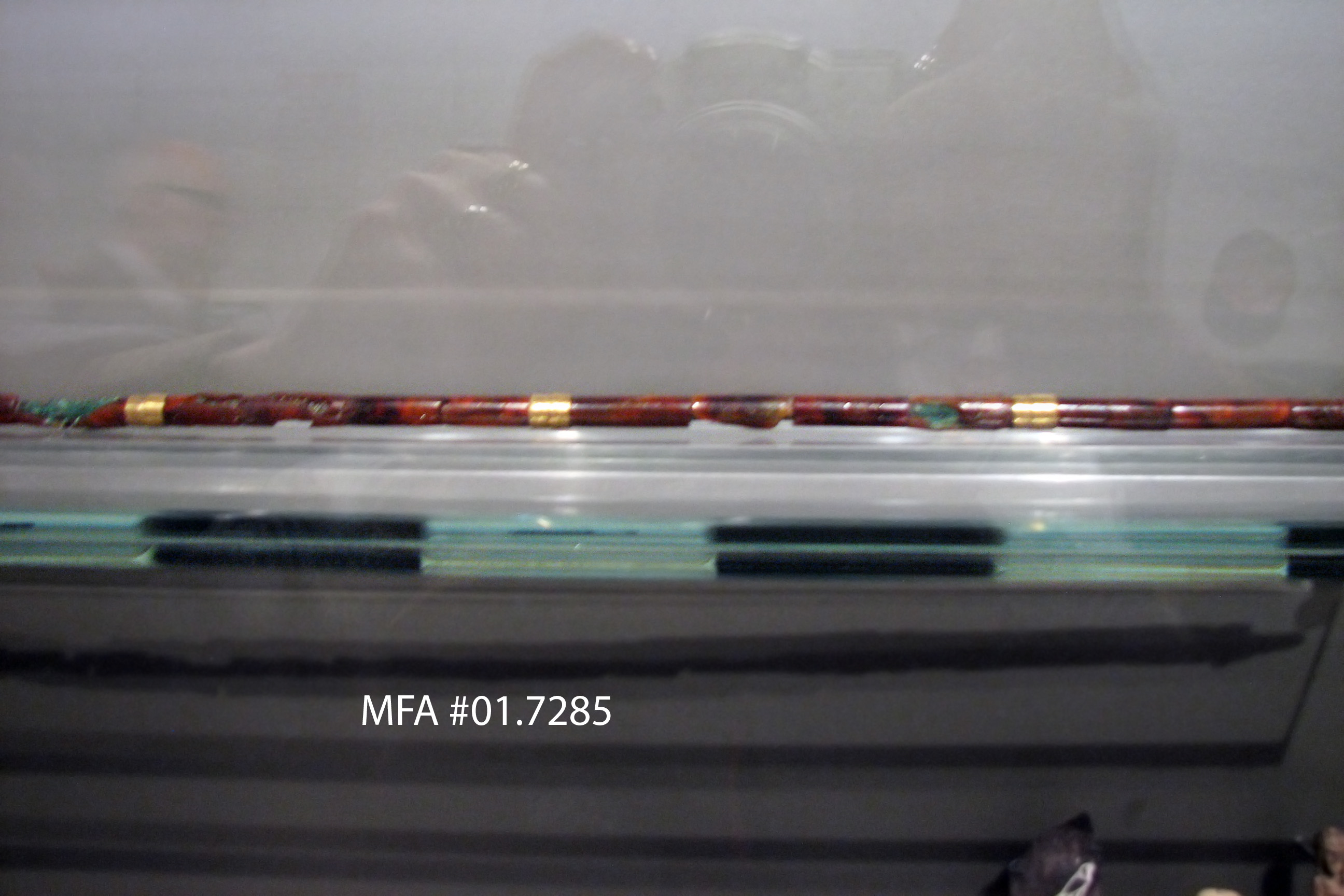 Scepter of King Khasekhemwy
Scepter of King Khasekhemwy
Egypt (Abydos, tomb of King Khasekhemwy), Dynasty 2, 2676-2649 B.C.E.
Sardonyx, gold, and copper; Length: 60 cm (23 5/8 in.)
Egypt Exploration Fund by subscription 1901,MFA #01.7285
My photo rather fuzzy and partial, here's the museum's photo:

" The scepter is composed of highly polished tubular beads of veined brown-red sardonyx held together by a copper rod. A thick band of gold surrounds every fourth bead, giving the appearance of horizontal stripes. The delicate construction of this object indicates that it was made for ceremonial use only. When found, it was broken in two pieces, the larger one seen here and a 12.7 cm (five-inch) segment now in the Cairo Museum."(From museum website)
